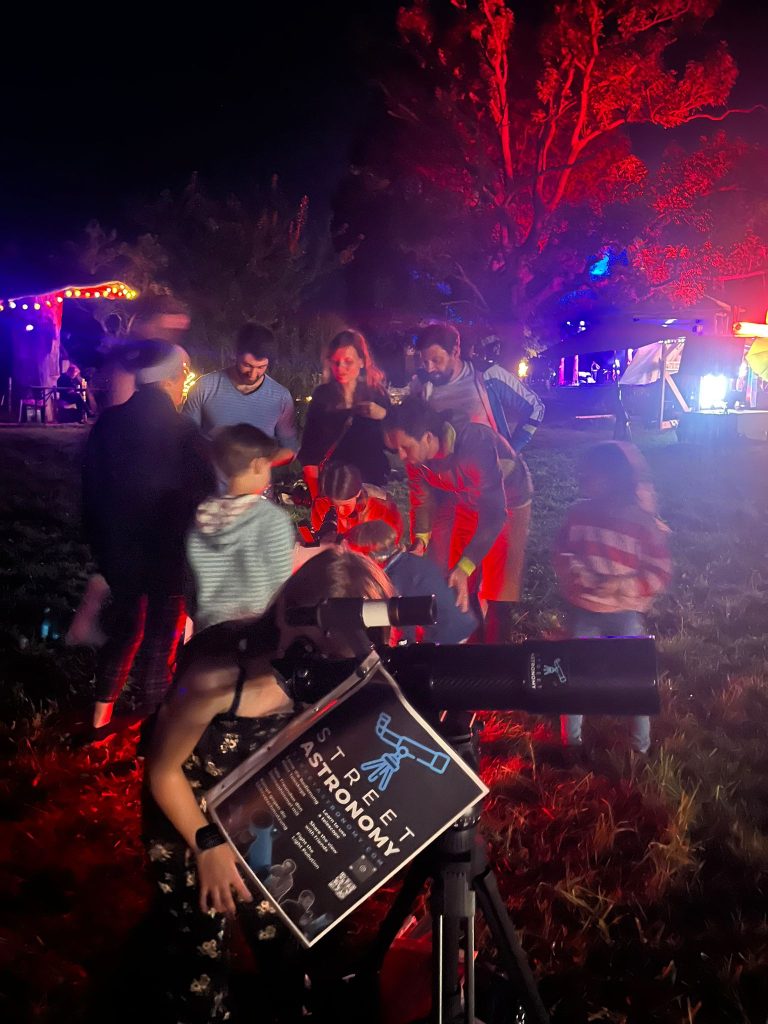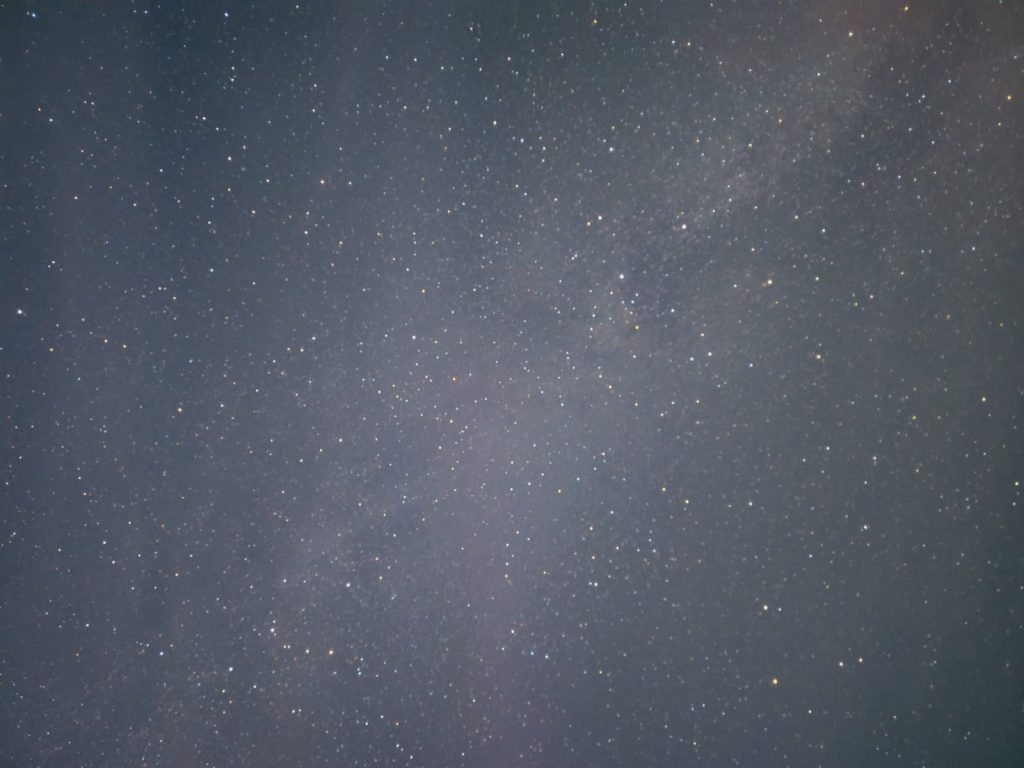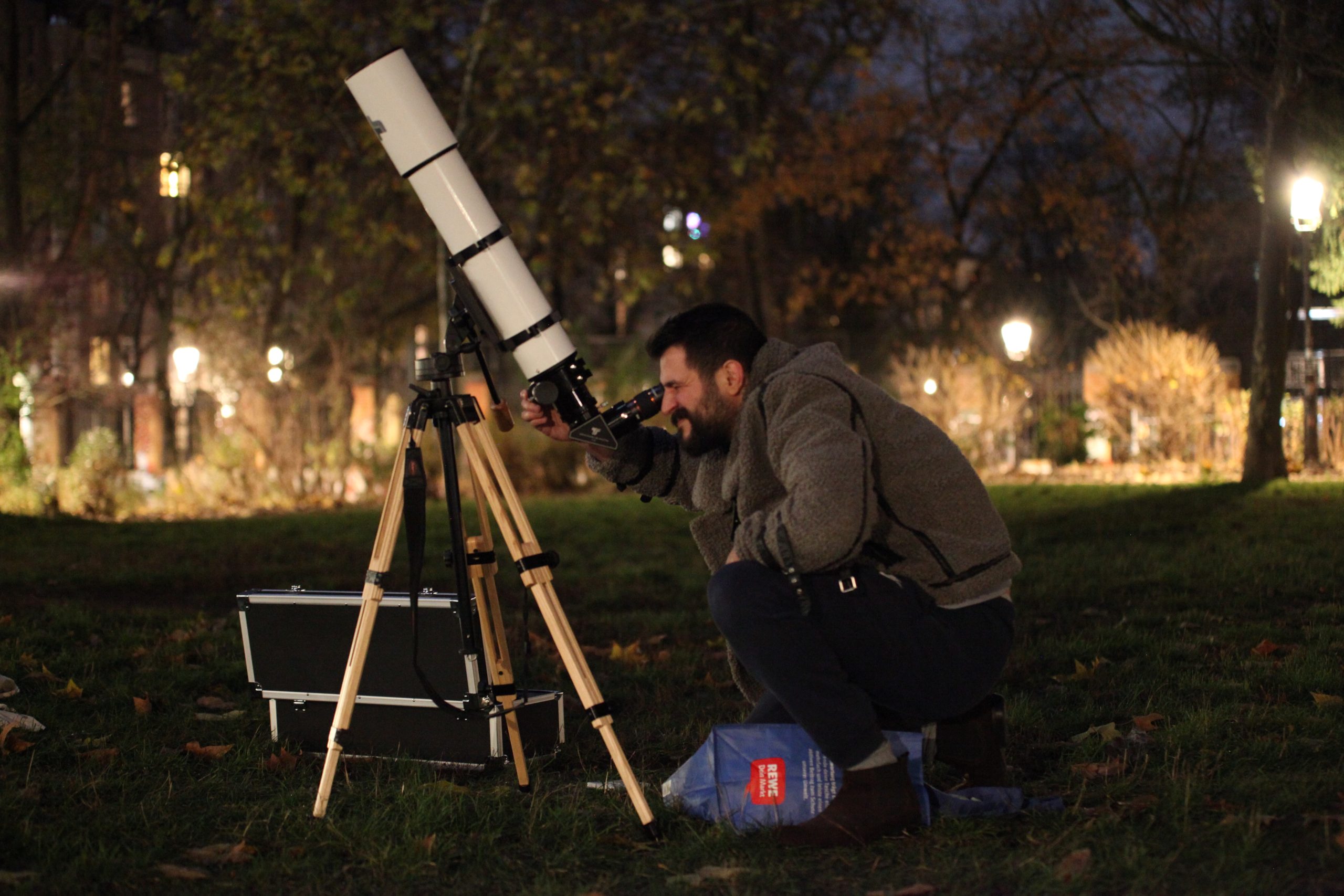Lieder Lauschen Am Rand is a music festival hosted outside of Berlin, right up against the Polish border. The name of the festival translates to “Listen to songs on the Border”. The street astronomers were invited to set up our telescopes for three evenings for roughly 500 guests of all ages. Music festivals are an ideal location for pop up astronomy. People open themselves up to new experiences, and they usually take place far enough outside the city that you can really see something. During the day, we used our solar filters, donated by Baader Planetarium, and at night, we observed the moon, Saturn, along with some star clusters.


Avinash, Elise, and Osama join me for three days camping out at the Polish border! For some of us, this is our very first music festival! We’re a bit nervous about bugs, but prepared for some great music and dark skies! As night falls, we bring our equipment out into the field, beside the stage, and wait for the full moon to pierce above the clouds. Far on the horizon, beyond the tree tops, is a low hanging layer of clouds. It would take a little bit longer for the moon to rise above them.
We tell people they need to wait just a few minutes. It builds suspense!
Good lighting for astronomy makes poor lighting for photographs! We gather around the soft red lantern, as the full moon skips across the sky. At it’s maximum, the full moon only reaches 10 degrees in height, which is why it looks so big on the horizon. The altitude of the moon actually varies throughout the year. In the Summer, in the northern hemisphere, the full moon is low in the sky. In the Winter, that reverses, the full moon rises highest in the sky, out of all the phases!

At 22:00, we get to work. At first, a few people wander over to our telescope. Then, with a small crowd forming, more get curious and join us. In some moments, we had more than 20 people waiting in line! We point out the shadows in the moon’s craters, and features on the surface that are best viewed during this phase.
But everyone wants to know when can we see Saturn. We had to fight for Saturn. Saturn is visible, but it’s still coming out late. When planets are low in the sky, it can be difficult to see detail. On this hazy night, just as with the moon, we need to wait until it rises above the level of the clouds.
10 more minutes! We said again and again! People and their families were sleepy. Anyone who didn’t get a glimpse came back the second night. The hours flew by, as people expressed this was the first time in their live they’ve used a telescope. They related stories of their childhood, once in a lifetime trips to the Grand Canyon. A simple glance elicited strong memories of connecting with nature.




And we’ll finish off with some photos from Osama, taken with his smartphone and an astrophotography app. The purple haze is actually from the festival lighting. Maybe next year we can work on a special observation hour, where everything is turned off.

